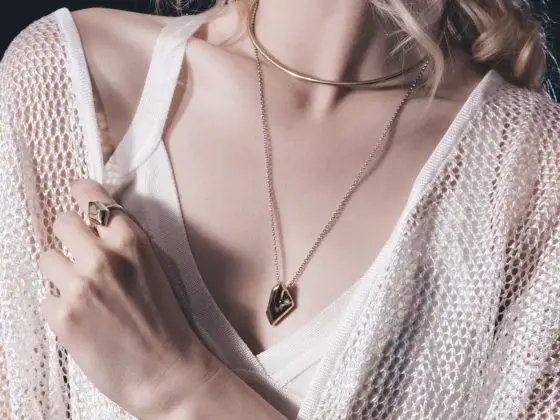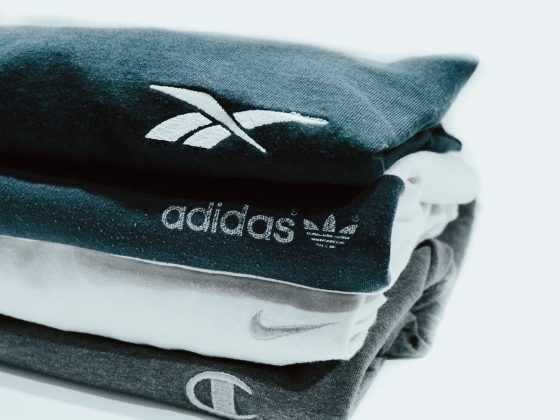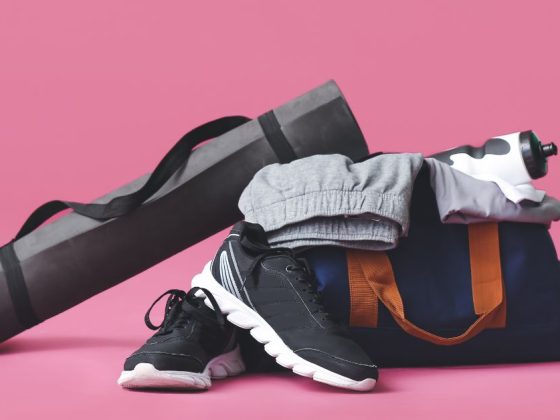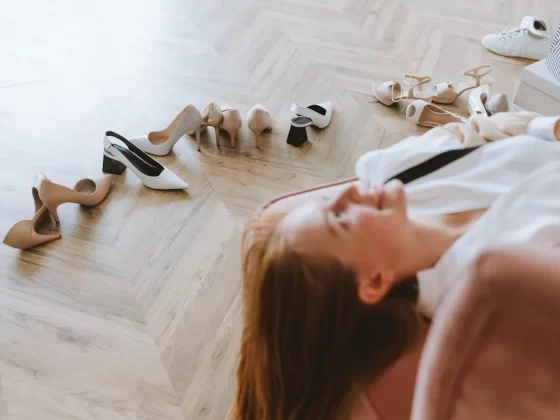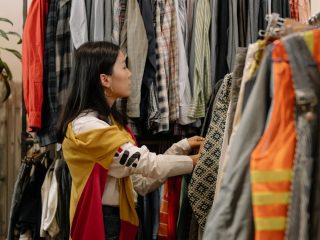 Thrifting has evolved from a simple, budget-friendly option to a dynamic, creative fashion pursuit that appeals to all shoppers. It’s not just about saving money; it’s about the thrill of discovering unique, one-of-a-kind pieces that carry their own stories. Each visit to a thrift or consignment store feels like a modern-day treasure hunt, offering a chance to find something extraordinary that stands out from the sea of mass-produced fashion.
Thrifting has evolved from a simple, budget-friendly option to a dynamic, creative fashion pursuit that appeals to all shoppers. It’s not just about saving money; it’s about the thrill of discovering unique, one-of-a-kind pieces that carry their own stories. Each visit to a thrift or consignment store feels like a modern-day treasure hunt, offering a chance to find something extraordinary that stands out from the sea of mass-produced fashion.
In a world dominated by fast fashion, thrifting provides a refreshing alternative, allowing you to build a wardrobe that reflects your individuality while making sustainable choices. Whether it’s a vintage Chanel blazer or a colorful ’70s gem, thrifting lets you embrace fashion history and contribute to an eco-friendlier way of shopping.
Ultimate Thrifting Guide: Designer Pieces & Vintage Gems
Thrifting is much more than a casual stroll through a secondhand store; it’s a skill that can be developed with practice, dedication, and a keen eye for detail. It’s about learning to navigate the racks with purpose, recognizing quality when you see it, and understanding how to identify valuable pieces amidst the sea of options. For those serious about elevating their wardrobes with distinctive finds, mastering the art of thrifting is essential. Here are some in-depth strategies and tips to help you become a seasoned thrift shopper, equipped to score designer pieces, vintage gems, and accessories that will set your style apart.
Know Your Size and Shape
One of the most critical aspects of thrifting is knowing your size—not just in modern terms but also in vintage sizing, which can differ dramatically. Since size standards have evolved over the decades, a size 12 dress from the 1960s might fit more like a modern-day size 8, and similarly, men’s suit jackets and trousers can have entirely different fits depending on the era. Ensure your crucial body measurements are on hand to save time and avoid frustration in the dressing room.
Knowing your bust, waist, hip, and inseam measurements will enable you to evaluate whether a piece will likely fit, regardless of the number on the tag. Vintage items tend to be cut differently, often with narrower shoulders or higher waistlines, so being familiar with your proportions will help you choose wisely and avoid disappointment.
Research Designers, Brands, and Fashion Eras
A true thrifting connoisseur is also a student of fashion history. Familiarizing yourself with well-known designers, sought-after vintage labels, and iconic fashion trends from different decades can make all the difference in identifying hidden treasures. A knowledgeable thrifter knows the value of spotting a classic Chanel tweed jacket, a Yves Saint Laurent blouse, or a pair of Salvatore Ferragamo shoes—often items that can be resold much higher than their purchase price.
Similarly, understanding the defining features of fashion from different eras can help you distinguish genuine vintage pieces from modern reproductions. Whether you’re drawn to the glamorous silhouettes of the 1950s, the bohemian flair of the 1970s, or the sharp tailoring of the 1980s, knowing your eras will give you a significant edge in the thrift store.
Check Labels, Tags, and Craftsmanship
One of the telltale signs of a high-quality garment is in the details—specifically, the labels and tags. Always take a moment to inspect the interior labels of the clothing you’re considering. Look for key indicators such as the country of origin, the materials used, and the care instructions. For example, a “Made in Italy” tag on a leather jacket or a “100% silk” label on a blouse often signifies superior craftsmanship and longevity.
Additionally, specific vintage labels—like those from luxury houses such as Gucci, Louis Vuitton, or Hermès—are worth their weight in gold. These labels tell a story of the piece’s origins and offer insight into its authenticity. Pay attention to seams, lining, and stitching as well. Quality craftsmanship often shows through impeccable finishing touches that mass-produced items lack.
Inspect for Wear and Condition
While thrifting offers an abundance of gems, only some pieces will be in pristine condition. Part of the art of thrifting is learning to assess whether an item’s flaws are minor or deal-breaking. Take the time to thoroughly inspect each garment for stains, holes, pilling, missing buttons, or any other signs of wear. Some issues, like minor stains or loose seams, can be easily remedied, while others might require professional attention.
Remember that imperfections can often be remedied, but they should factor into the overall cost and effort. When evaluating home décor, look for structural integrity, particularly in furniture pieces, and ensure that any wear and tear adds character rather than diminishes the item’s value.
Embrace Tailoring and Alterations
Only some thrift pieces will fit perfectly straight off the rack, but it may be worth the investment. Tailoring is the thrifter’s secret weapon, and with the help of a skilled tailor, almost any garment can be adjusted to fit you like a glove. Whether it’s hemming a skirt, taking in a jacket, or altering the length of pants, slight alterations can make an immense difference in how a garment looks and feels. This is especially true for vintage pieces, which often have cuts that differ from modern clothing. By embracing tailoring, you can turn a “nearly perfect” find into a custom-fitted, unique addition to your wardrobe.
Learn to Negotiate
Thrifting also offers opportunities for friendly negotiation. While not all thrift stores allow haggling, many are open to price reductions, especially for items on the shelves for a while or with visible flaws. If you notice a small tear or stain on an otherwise perfect dress or jacket, politely ask if the price can be adjusted to reflect the condition. Additionally, purchasing multiple items might give you leverage for a discount. Don’t hesitate to negotiate—you might have an even better deal!
Venture Beyond Your Regular Thrift Stores
Expanding your horizons and exploring various stores is essential to elevate your thrifting game. Different neighborhoods and regions attract different donations, so you’re increasing your chances of discovering unique pieces by venturing into new areas. High-end consignment shops, charity-run thrift stores, and estate sales can all offer different treasures.
It’s also worth checking out vintage pop-up shops, flea markets, and online thrift platforms for additional options. Thrifting is as much about the adventure as the find, so don’t limit yourself to familiar places—sometimes, the best discoveries are made off the beaten path.
Must-Explore Categories When Thrifting
Thrift stores are a treasure of endless possibilities, and by focusing on specific categories, you can uncover genuinely remarkable items. Here are some key areas to explore in your quest for fashion treasures:
Designer Brands
Thrift stores often hide high-end designer pieces that others have overlooked. Brands like Chanel, Gucci, Burberry, and Prada occasionally find their way onto thrift store racks, waiting for someone with a discerning eye to scoop them up. Look for labels from luxury fashion houses and lesser-known but equally valuable designers. Scoring a designer piece at a fraction of its retail price is one of the ultimate victories in thrifting.
Vintage Fashion
Vintage clothing offers a timeless aesthetic that transcends current trends. Whether it’s a floral dress from the 1950s, a flowing bohemian blouse from the 1970s, or a bold power suit from the 1980s, vintage pieces have a character and charm that’s hard to find in modern clothing. Thrift stores are a fantastic source for these items, often housing treasures that have stood the test.
Accessories and Home Décor
Accessories like jewelry, handbags, belts, and scarves are often overlooked but can be some of the most exciting finds in thrift stores. Similarly, don’t forget to browse the home décor section for unique and vintage items that can add character to your living space. From retro glassware to mid-century modern furniture, thrift stores offer a wide range of home décor treasures waiting to be discovered.
Thrifting is more than just a shopping experience—it’s a lifestyle choice that reflects the dedication to sustainability, individuality, and conscious consumerism. By shopping secondhand, you’re reducing the demand for fast fashion, conserving resources, and contributing to a more sustainable fashion ecosystem. Each thrifted piece tells a story, connecting you to the past while helping to shape a more thoughtful and ethical future for fashion. With a bit of patience, perseverance, and creativity, thrifting allows you to build a wardrobe that’s not only stylish and unique but also a reflection of your values and personal journey.
Conclusion
Thrifting has evolved into a vibrant, creative pursuit that offers much more than just budget-friendly fashion. It’s an adventure where each visit to a thrift store or consignment shop can lead to discovering unique, one-of-a-kind pieces with their own stories and histories. From iconic designer finds to vintage gems, thrifting allows you to create a distinctive wardrobe while making sustainable choices. Embracing thrifting enhances your style and supports a more eco-conscious fashion industry. With some skill and a keen eye, you can turn thrifting into a rewarding journey that reflects your individuality and values.
